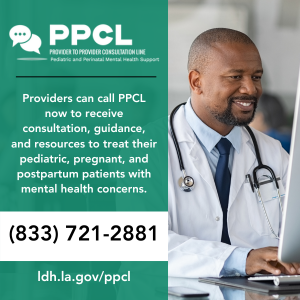The Louisiana Department of Health (LDH) is issuing this Health Alert Network (HAN) Health Advisory to alert clinicians of an increase in Oropouche virus disease in the Americas region, originating from endemic areas in the Amazon basin and new areas in South America and the Caribbean.
Between January 1 and August 1, 2024, more than 8,000 cases of Oropouche virus disease were reported, including two deaths and five cases of vertical transmission associated with fetal death or congenital abnormalities. Countries reporting cases include Brazil, Bolivia, Peru, Colombia, and Cuba.
In the United States and Europe in 2024, travel-associated cases have been identified in travelers returning from Cuba and Brazil. As testing and surveillance for Oropouche virus disease increase in the Americas, reports of cases from additional countries are expected. This Health Advisory advises on evaluating and testing travelers who have been in impacted areas with signs and symptoms consistent with Oropouche virus infection. It also raises awareness of the possible risk of vertical transmission (e.g., from gestational parent to fetus during pregnancy) and associated adverse effects on pregnancy and highlights prevention measures to mitigate additional spread of the virus and potential importation into unaffected areas, including the United States.
Summary for healthcare providers:
Diagnosis, consultation, and treatment
Consider Oropouche virus infection in a patient who has been in an area with documented or suspected Oropouche virus circulation within 2 weeks of initial symptom onset (as patients may experience recurrent symptoms), and the following:
- Abrupt onset of reported fever, headache, and one or more of the following: myalgia, arthralgia, photophobia, retroorbital/eye pain, or signs and symptoms of neuroinvasive disease (e.g., stiff neck, altered mental status, seizures, limb weakness, or cerebrospinal fluid pleocytosis); AND
- No respiratory symptoms (e.g., cough, rhinorrhea, shortness of breath); AND
- Tested negative for other possible diseases, in particular dengue.
-
- Rule out dengue virus infection in travelers with suspect Oropouche virus infection because these viruses often cocirculate and cause similar clinical presentations during acute illness.
- If strong suspicion of Oropouche virus disease exists based on the patient’s clinical features and history of travel to an area with virus circulation, do not wait for negative testing for other infections before contacting the LDH Infectious Disease Epidemiology (IDEpi) clinician 27/7 hotline: 800-256-2748.
- Diagnostic testing for Oropouche virus is not available through commercial laboratories.
- IDEpi epidemiologists will facilitate specimen submission to CDC for patients with suspected Oropouche virus infection.
Be aware that a high proportion of patients (about 70%) with Oropouche virus disease may experience recurrent symptoms days to weeks after resolution of their initial illness.
Be aware of the risk of vertical transmission and possible adverse impacts on the fetus, including fetal death or congenital abnormalities. Monitor pregnancies in people with laboratory evidence of Oropouche virus infection and provide thorough infant evaluations.
Pregnant people are currently recommended to reconsider non-essential travel to areas with an Oropouche virus Level 2 Travel Health Notice. If a pregnant person decides to travel, inform them of the possible risks to the fetus and counsel them to strictly prevent insect bites during travel.
Manage travelers with suspect Oropouche virus disease with acetaminophen as the preferred first-line treatment for fever and pain. Aspirin and other NSAIDS should not be used to reduce the risk of hemorrhage.
Be aware that people who may be at higher risk for complications or severe disease include pregnant people, older adults (e.g., aged 65 years or older), and people with underlying medical conditions (e.g., immune suppression, hypertension, diabetes, or cardiovascular disease).
Direct all travelers going to areas with Oropouche virus transmission to use measures to prevent insect bites during travel and for 3 weeks after travel to mitigate additional spread of the virus and potential importation into unaffected areas in the United States.
Clinician reporting
Report all suspected Oropouche virus disease infections to the LDH IDEpi 24/7 clinician hotline: 800-256-2748.
Additional Information for healthcare providers:
Oropouche virus belongs to the Simbu serogroup of the genus Orthobunyavirus in the Peribunyaviridae family. The virus was first detected in 1955 in Trinidad and Tobago and is endemic in the Amazon basin. Previous outbreaks have been described in Bolivia, Brazil, Colombia, Ecuador, French Guiana, Panama, and Peru. One child was infected in Haiti in 2014. The current 2024 outbreak is occurring in endemic areas and new areas outside the Amazon basin; countries reporting locally acquired (autochthonous) cases include Brazil, Bolivia, Peru, Colombia, and Cuba. Although travel-associated cases have been identified in the United States (n=21, none in Louisiana), no evidence of local transmission currently exists within the United States or its territories.
Sylvatic (enzootic) transmission of Oropouche virus occurs in forested areas between mosquitoes and non-human vertebrate hosts (e.g., sloths, non-human primates, domestic and wild birds, and rodents). Humans can become infected while visiting forested areas and are likely responsible for introducing the virus into urban environments. Humans contribute to the transmission cycle in urban environments since infected humans develop sufficient viremia to serve as amplifying hosts. Biting midges (Culicoides paraensis) and possibly certain mosquitoes (Culex quinquefasciatus) are responsible for transmitting the virus from an infected person to an uninfected person in urban areas.
Approximately 60% of people infected with Oropouche virus become symptomatic. The incubation period is typically 3–10 days. Initial clinical presentation is similar to diseases caused by dengue, Zika, and chikungunya viruses, with acute onset of fever, chills, headache, myalgia, and arthralgia. Other symptoms can include retroorbital (eye) pain, photophobia (light sensitivity), nausea, vomiting, diarrhea, fatigue, maculopapular rash, conjunctival injection, and abdominal pain. Clinical laboratory findings can include lymphopenia and leukopenia, elevated C-reactive protein (CRP), and slightly elevated liver enzymes. Initial symptoms typically resolve after a few days, but a high proportion (about 70%) experience recurrent symptoms days to weeks after resolution of their initial illness. Although illness is typically mild, it is estimated less than 5% of patients can develop hemorrhagic manifestations (e.g., epistaxis, gingival bleeding, melena, menorrhagia, petechiae) or neuroinvasive disease (e.g., meningitis, meningoencephalitis). Neuroinvasive disease symptoms may include intense occipital pain, dizziness, confusion, lethargy, photophobia, nausea, vomiting, nuchal rigidity, and nystagmus. Clinical laboratory findings for patients with neuroinvasive disease include pleocytosis and elevated protein in cerebrospinal fluid (CSF).
The risk factors for more severe Oropouche virus disease are not well-defined. People at risk for more severe disease likely include those at risk for severe disease with other viral infections transmitted by vectors (e.g., people aged 65 years or older, or those with underlying medical conditions, such as immune suppression, hypertension, diabetes, or cardiovascular disease). Earlier this year, Brazil reported two deaths in otherwise healthy non-pregnant women, and five cases in pregnant people with evidence of vertical transmission of the virus to the fetus associated with fetal death or congenital abnormalities, including microcephaly. This was the first report of deaths and Oropouche virus vertical transmission and associated adverse birth outcomes.
Laboratory diagnosis is generally accomplished by testing serum. Cerebrospinal fluid can also be tested in patients with signs and symptoms of neuroinvasive disease. Diagnostic testing is available at some public health laboratories (e.g., Wadsworth Center, NYS Department of Health) and at CDC. CDC and other public health laboratories are currently working to validate additional diagnostic assays. For current testing and case reporting guidance, visit CDC’s website. In many countries, outbreaks of dengue are occurring in areas with reported Oropouche virus transmission. For patients with suspected Oropouche virus disease, it is important to rule out dengue virus infection because proper clinical management of dengue can improve health outcomes. Other diagnostic considerations include chikungunya, Zika, leptospirosis, malaria, or infections caused by various other bacterial or viral pathogens (e.g., rickettsia, group A streptococcus, rubella, measles, parvovirus, enteroviruses, adenovirus, Mayaro virus).
No specific antiviral treatments or vaccines are available for Oropouche virus disease. Treatment for symptoms can include rest, fluids, and use of analgesics and antipyretics. Acetaminophen is the preferred first-line treatment for fever and pain. Aspirin and other non-steroidal anti-inflammatory drugs (NSAIDs) should not be used to reduce the risk of hemorrhage. Patients who develop more severe symptoms should be hospitalized for close observation and supportive treatment. Pregnant people with laboratory evidence of Oropouche virus infection should be monitored during pregnancy and live-born infants should be carefully evaluated.
For More Information
- About Oropouche | CDC
- Travel Health Notices| CDC
- Preventing Mosquito Bites | CDC
- Find the Repellent that is Right for You | EPA
- Dengue: Guidelines for Diagnosis, Treatment, Prevention and Control | WHO
- Oropouche virus disease among travelers – United States, 2024 (MMWR Publication)
References
- The Lancet Infectious Diseases. Oropouche fever, the mysterious threat. Lancet Infect Dis. 2024 Aug 8:S1473-3099(24)00516-4. doi: 10.1016/S1473-3099(24)00516-4. Epub ahead of print.
- Pan American Health Organization / World Health Organization. Epidemiological Alert: Oropouche in the Region of the Americas: vertical transmission event under investigation in Brazil, 17 July 2024. Washington, D.C.; 2024.
- Pan American Health Organization / World Health Organization. Epidemiological Alert: Oropouche in the Region of the Americas, 1 August 2024. Washington, D.C.; 2024.
- Florida Department of Health. Florida arbovirus surveillance Week 31: August 4-August 10, 2024. https://www.floridahealth.gov/diseases-and-conditions/mosquito-borne-diseases/surveillance.html.
- European Centre for Disease Prevention and Control. Oropouche virus disease cases imported into the European Union – 9 August 2024. Stockholm; 2024.
- Ladner JT, Savji N, Lofts L, et al. Genomic and phylogenetic characterization of viruses included in the Manzanilla and Oropouche species complexes of the genus Orthobunyavirus, family Bunyaviridae. J Gen Virol. 2014 May; 95(Pt 5):1055-1066. doi: 10.1099/vir.0.061309-0.
- Pinheiro FP, Travassos da Rosa AP, Travassos da Rosa JF, et al. Oropouche virus. I. A review of clinical, epidemiological, and ecological findings. Am J Trop Med Hyg. 1981; 30(1):149-60.
- Pinheiro FP, Travassos da Rosa AP, Gomes ML, et al. Transmission of Oropouche virus from man to hamster by the midge Culicoides paraensis. Science. 1982; 215(4537):1251-3. doi: 10.1126/science.6800036.
- Roberts DR, Hoch AL, Dixon KE, et al. Oropouche virus. III. Entomological observations from three epidemics in Pará, Brazil, 1975. Am J Trop Med Hyg. 1981; 30(1):165-71.
- Cardoso BF, Serra OP, Heinen LB, et al. Detection of Oropouche virus segment S in patients and in Culex quinquefasciatus in the state of Mato Grosso, Brazil. Mem Inst Oswaldo Cruz. 2015; 110(6):745-54. doi: 10.1590/0074-02760150123.
- Pan American Health Organization / World Health Organization. Public Health Risk Assessment related to Oropouche Virus (OROV) in the Region of the Americas, 3 August 2024. Washington, D.C.; 2024.


